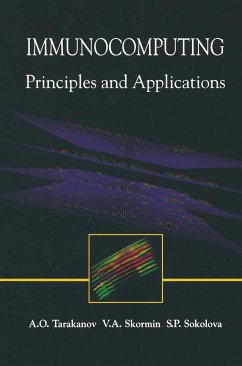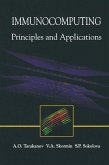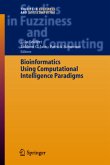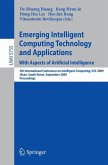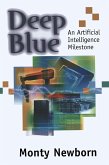Overview This book introduces immunocomputing (Ie) as a new computing approach that replicates the principles of information processing by proteins and immune networks. It establishes a rigorous mathematical basis for IC, consistent with recent findings in immunology, and it presents various applications of IC to specific computationally intensive real-life problems. The hardware implementation aspects of the IC concept in an immunocomputer as a new kind of computing medium and its potential connections with modem biological microchips (biochips) and future biomolecular computers (biocomputers) are also discussed. All biological systems at the cellular and biomolecular levels are sophisticated mechanisms honed to perfection by millions of years of evolution, and their exploration provides inspiration for various novel concepts in science and engineering. Of these systems, however, only two types, the neural system and the immune system of the vertebrates, possess the extraordinary capabilities of "intellectual" information processing, which include memory, the ability to learn, to recognize, and to make decisions with respect to unknown situations. The potential of the natural neural system as a biological prototype of a computing scheme has already been utilized intensively in computer science through the mathematical and software models of artificial neural networks (ANN) and their hardware implementation in neural computers (see, e.g., Haykin, 1999; Wasserman, 1990).
Hinweis: Dieser Artikel kann nur an eine deutsche Lieferadresse ausgeliefert werden.
Hinweis: Dieser Artikel kann nur an eine deutsche Lieferadresse ausgeliefert werden.
From the reviews:
"Artificial immune systems, which are the subject of this book, is a new computing area (immunocomputing) inspired by biological processes at the molecular level. ... The book is written very well, it is thought provoking, and it mathematically sound. It is a valuable resource for researchers in computer, systems or information sciences, as well as for immunologists. It is also suitable for advanced graduate students in these areas. I highly recommend it to all readers of this journal." (George J. Klir, International Journal of General Systems, Vol. 34 (3), 2005)
"The book under review, introduces immunocomputing as a new computing approach that bridges between immunology and computer engineering. ... The book consists of seven chapters, and a conclusion section. In addition, it features an extensive bibliography and glossary of symbols at the end. ... This book is recommended for experts in computer science, artificial intelligence and biomolecular computing, immunologists, and students interested in immunocomputing." (Wenzhong Zhao, SIGACT News, Vol. 36 (4), 2005)
"Artificial immune systems, which are the subject of this book, is a new computing area (immunocomputing) inspired by biological processes at the molecular level. ... The book is written very well, it is thought provoking, and it mathematically sound. It is a valuable resource for researchers in computer, systems or information sciences, as well as for immunologists. It is also suitable for advanced graduate students in these areas. I highly recommend it to all readers of this journal." (George J. Klir, International Journal of General Systems, Vol. 34 (3), 2005)
"The book under review, introduces immunocomputing as a new computing approach that bridges between immunology and computer engineering. ... The book consists of seven chapters, and a conclusion section. In addition, it features an extensive bibliography and glossary of symbols at the end. ... This book is recommended for experts in computer science, artificial intelligence and biomolecular computing, immunologists, and students interested in immunocomputing." (Wenzhong Zhao, SIGACT News, Vol. 36 (4), 2005)

